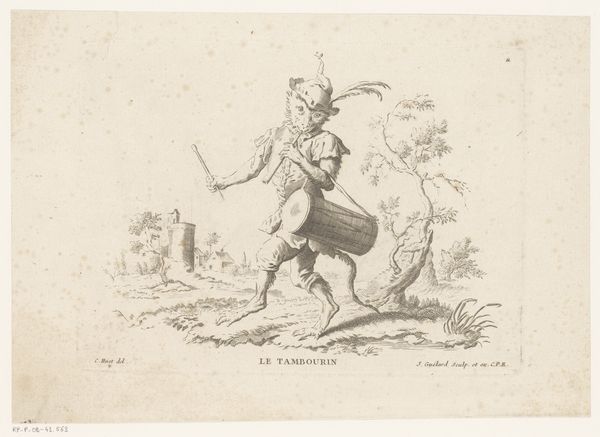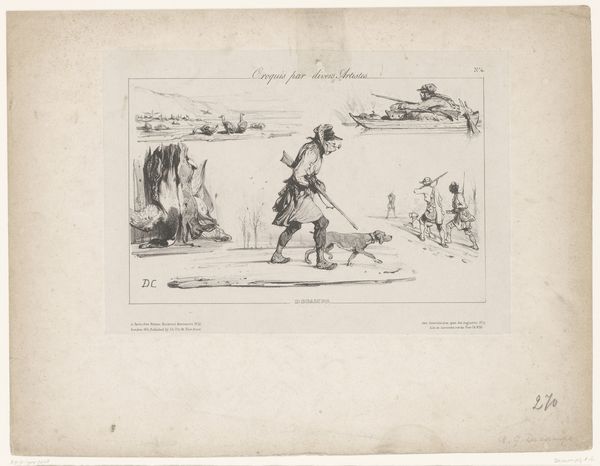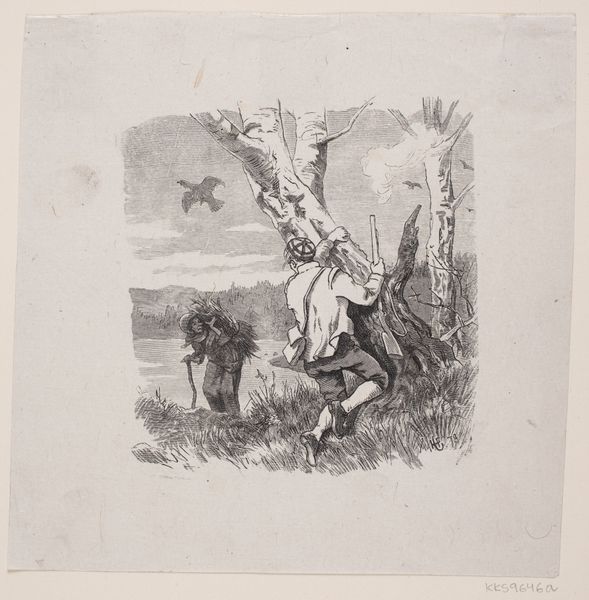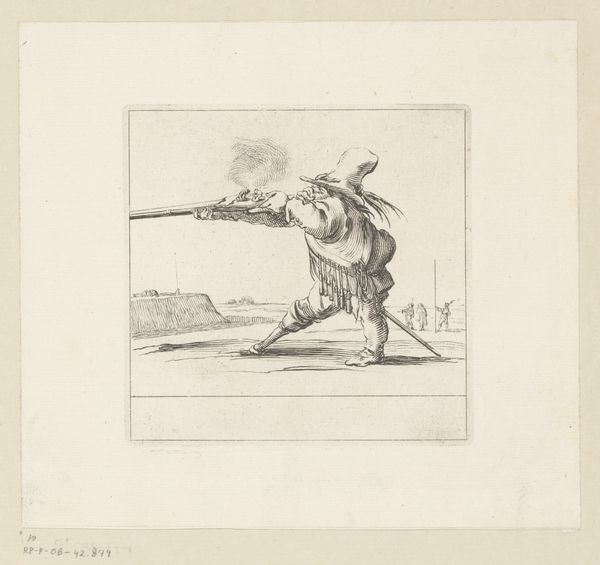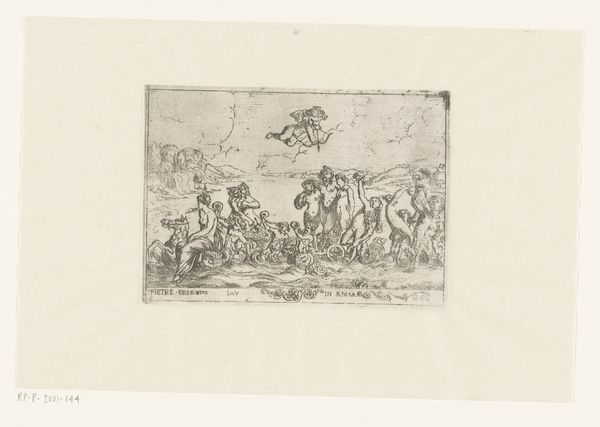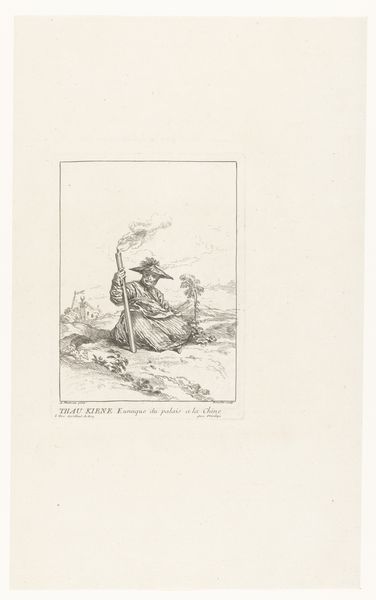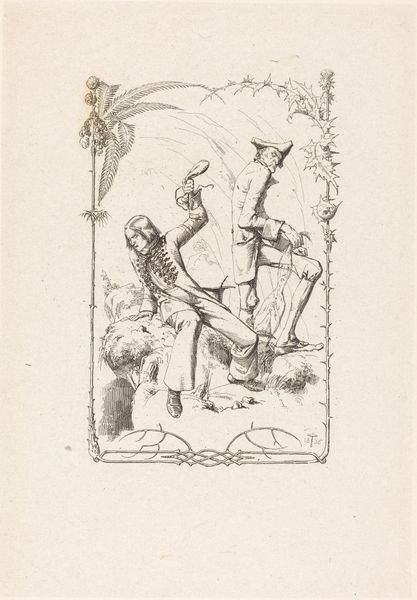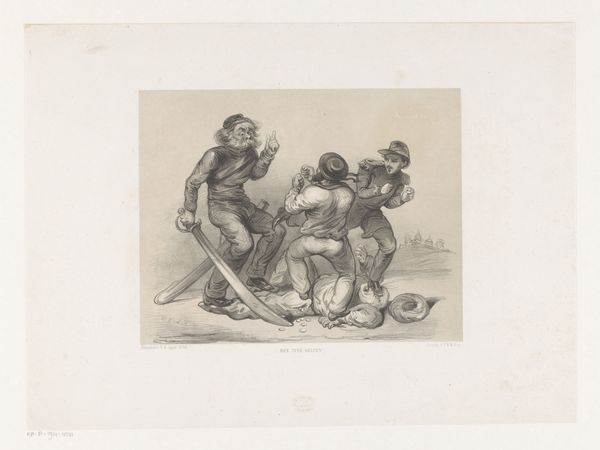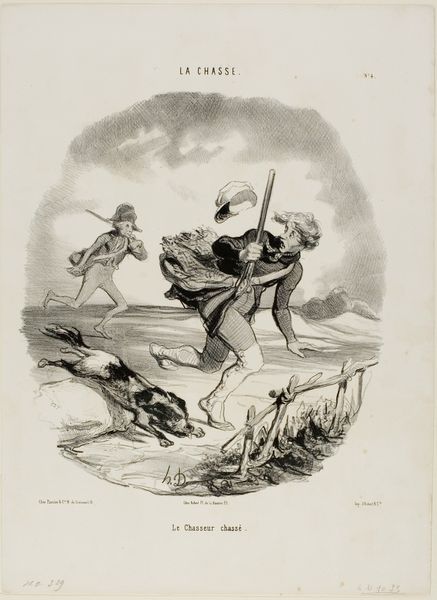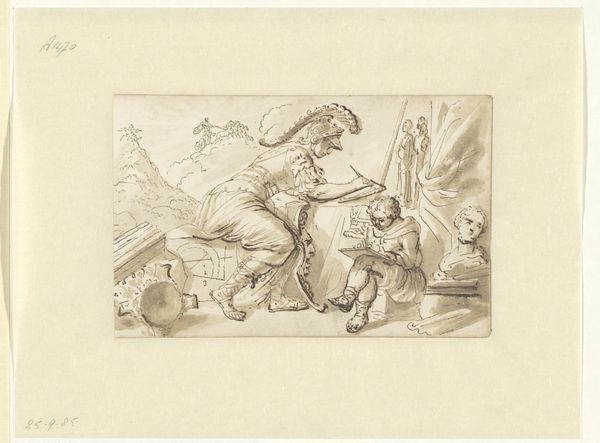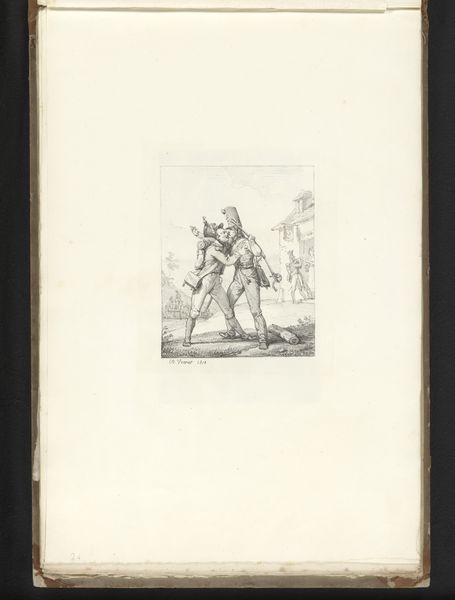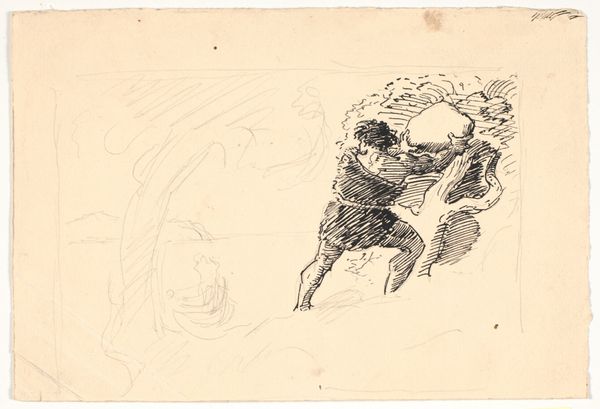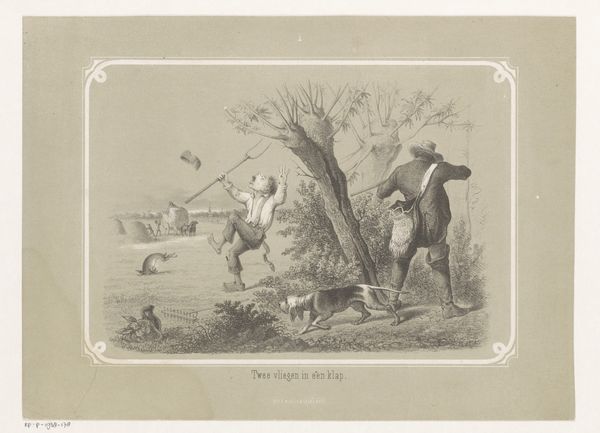
Dimensions: height 231 mm, width 263 mm
Copyright: Rijks Museum: Open Domain
Editor: This is "Visser valt achterover" by Alexander Ver Huell, dating sometime between 1832 and 1897. It's a pen and pencil drawing. There's this feeling of chaotic energy in it. A figure is falling backward, a dog's running… it feels like slapstick comedy. What’s your interpretation? Curator: I see a fascinating snapshot of 19th-century Dutch society through the lens of caricature. It's not just about the comedic fall; consider what this image might be saying about class, labor, and the disruption of traditional rural life. Editor: Class? How so? Curator: Note the falling figure's attire – clogs, perhaps indicative of the working class. Is the humor here gentle, or is it mocking someone perceived as clumsy or unrefined? How might that reflect the social hierarchies of the time? What kind of dialogue could we expect the audience to have when seeing this? Editor: I never thought of it that way, seeing the falling figure as representative of a particular class. More like just… someone having a bad day. Curator: Exactly! The genius of caricature lies in its ability to tap into universal experiences while simultaneously reflecting specific cultural anxieties. Ver Huell places us within that relationship with the other. Is this person falling, or is society pulling them down? Editor: That makes me consider the context surrounding the fishing rod and his unexpected tumble backwards! He could be working in harsh and/or unsafe environments… Curator: Precisely! Think about it: whose perspective is privileged here? The artist's, the presumed viewer's, or the fisherman’s? And what does it say about who gets to laugh at whom? Editor: I hadn’t considered how loaded a seemingly simple image could be. It feels more critical now, not just funny. Curator: The personal is political, even in a small drawing. Looking closely reveals the societal values baked into our laughter.
Comments
No comments
Be the first to comment and join the conversation on the ultimate creative platform.
